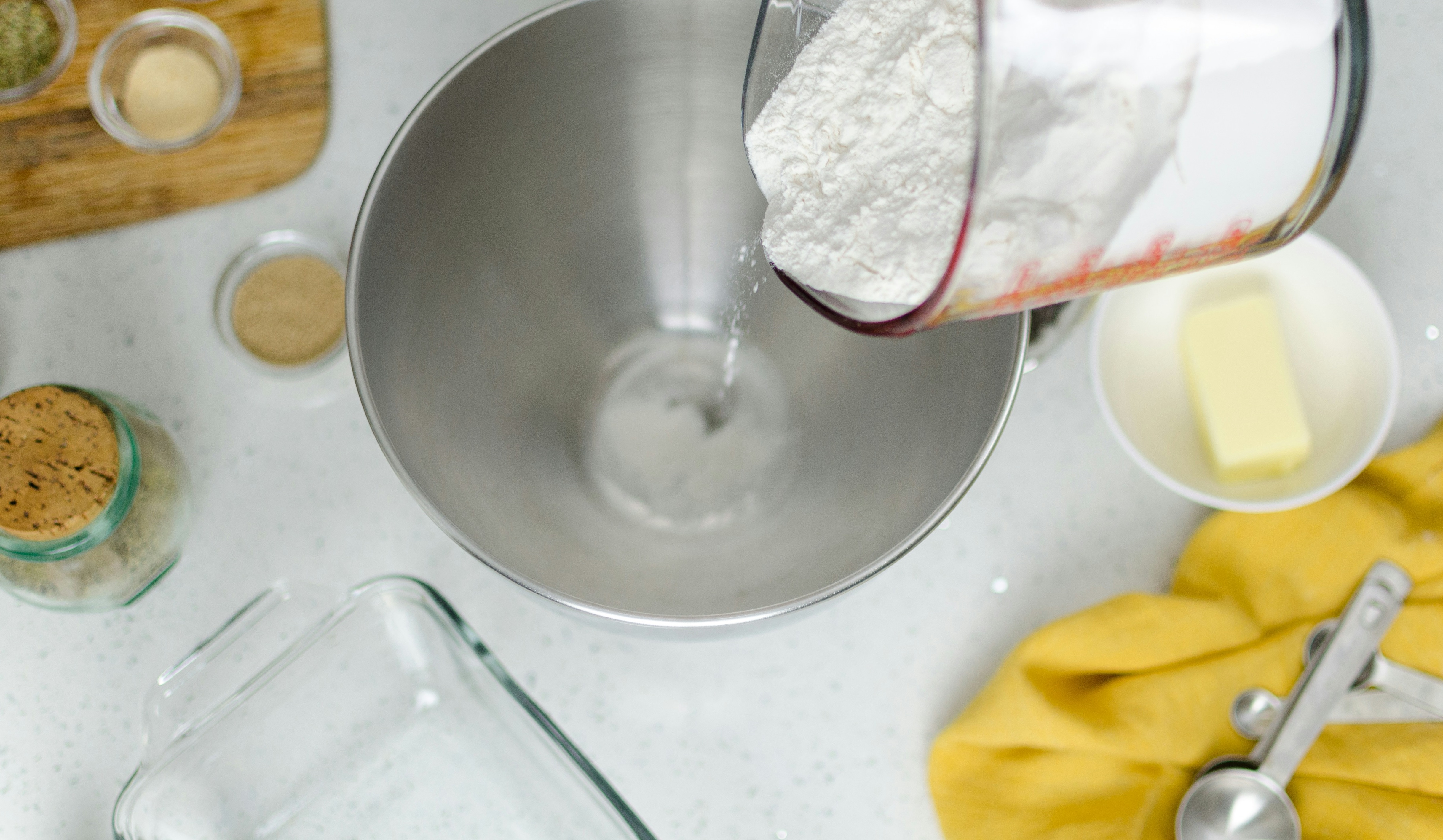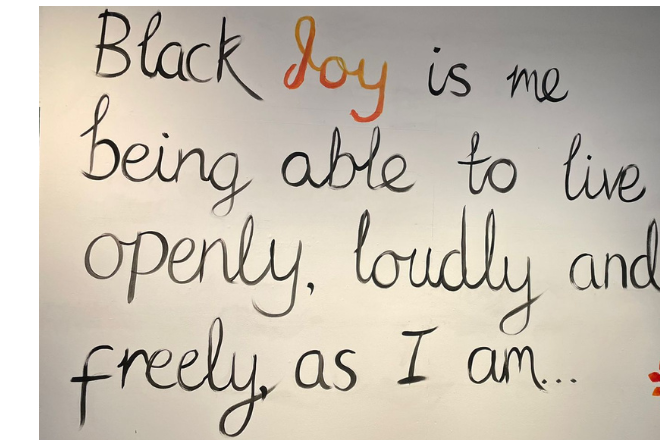This year’s Not Another Co-Production Festival was themed around ingredients for a successful co-production recipe. In this blog, Al, Ashley, George and Krisztina share their impressions and insights from the festival in the form of a recipe for you to enjoy. 😋
Background
The Not Another Co-Production Festival is in its third and final year. It is funded by the Big Lottery Fund and facilitated by People’s Voice Media, Curators of Change,Ideas Alliance and a wide range of other contributors. The aim of the event is to develop, explore and exchange knowledge of co-production across England. This year, the event had a culinary theme, focusing on the necessary ingredients for a successful co-production recipe. All of these recipes can be found in the Not Another Co-Production Cookbook.

Preparation
Invite as many people who share a passion for co-production as your chosen venue fits
Send out extensive joining instructions that go above and beyond to make the event as accessible as possible by:
- Providing travel information to the venue including closest public transportation stops
- Writing an agenda for the sessions, and explaining what is going to happen throughout the day and include information about the topics that will be covered so people are aware in advance
- Including information about accessibility at the event, for example:
- A link for the venue, where they show pictures and detailed information about the space
- The name of the restaurant that will provide lunch
- Other measures that will be in place to ensure the accessibility of the event
And add a teaspoon of innovative ideas.

Ingredients
- Find an accessible venue, that has a room that can be used as a prayer room and/or as a quiet room to decompress, and outside space with seating. Make sure the location is close to convenient public transport station, has no steps in or up to entrance of the building, and has accessible toilets.
- Ensure participants know who the designated safeguarding leads are for the event and that you let participants know who to go to if they need any support during the event
- Play atmospheric audio and music
- Provide content warnings at the start of the event and during for some of the topics that may be covered at the event, if needed.
- Add a sprinkling of sunny weather
Food
- Start the event with sharing a meal together. Make sure there are options available suitable for everyone’s dietary requirements. Provide some snacks and drinks throughout
- Set up the tables for the meal in the style of a family dinner with tables organised in a U shape with chairs on both sides, so people can talk to others around them
- Provide sustainable or reusable plates and cutlery to minimise the environmental impact of the event
- Share co-production recipes at the table to support discussion and sharing, and for people to read and take away. Give out blank cards for participants to share their ideas and co-production recipes.
People
- Ensure the event is hosted by people who are friendly, inclusive, knowledgeable about their audience and have a good sense of humour.
- Invite people from different backgrounds to be in the room with an interest in and/or involved in co-production. These could include people delivering training, working for different organisations, as well as people who have less experience but are interested in co-production. It is very inspiring to be in a space where everyone is wanting to co-create change!
Al said:
“I had no idea so many areas were considering production so seriously and more roles for 'co-production' opening in places like councils. For example, co-producing 'how do we address loneliness' in the community.”
Activities
Provide a variety of informative sessions where people can learn about different projects using co-production and gain insights into the journey towards successful co-production. This is summary of some of the sessions we attended:
- Pasta Vita: Vita shared her recipe for co-production in the form of a tomato pasta recipe. The presentation reminded us that in co-production, just like in a recipe, each single ingredient is equally important and contributes in equal measure to the success of the dish. You can read the full recipe in the Not Another Co-Production Cookbook.
- Diabetes Friendly Tikka Masala: The Newham Community Researchers shared their recipe for co-producing community through a Tikka Masala recipe. The team shared their research from working together to co-produce research and collect community insights about people’s experiences of type 2 diabetes in Newham. You can read the full recipe in the Not Another Co-production Cookbook.
- Community Reporters Reporting: People’s Voice Media gave us an overview of the Community Reporters Model. We leant 3 stages of community reporting, which are gathering stories, curating stories and mobilising stories. We also talked about the challenges of qualitative story telling, especially how it is sometimes viewed as less valuable because it lacks quantitative elements, like statistics.
- Update on the Not Another Co-production project: Isaac and Cat gave a presentation to update us on the Not Another Co-Production Project, which is a 12-month programme of support to develop co-production across England.
Offer a selection of breakout room activities, where people can decide what activity they would like to take part in:
- Some of us went to the Recipe for Resilience: Human Book breakout session, where Lee shared his lived experience of ADHD and mental health difficulties via human interaction, as if his life was a “human book”, inviting questions from others.
- Others went to hear Isaac update on the project Co-Production Collective is working on with Peoples Voice Media about Racism within Co-Production: A Journey Towards Anti-Racism. Isaac shared why racism within co-production needs exploration as well as some initial findings from the project. This included a very powerful video of someone who felt invalidated and exhausted from having to fight to get their voice heard.
Set aside some free time in between sessions so participants can:
- Meet new people and make new friendships
- Speak to each other over a non-alcoholic drink and build connections
- Connect with each other over the activities to facilitate networking. We felt that there was a great balance of structured free time during the sessions, and unstructured free time in between, when we could freely chat with others.
Add a sprinkle of
- A perfect host
- Pronouns & Respect: Respect all people by asking how they would like to be referred to
- Anti-Racism & Inclusion: we talked through the ground rules of the event and also what it means to be anti-racist: if you notice something that isn’t right, call it out!
- Old Friends and people we had only ever met online that we now had the chance to speak to in person thanks to the Not Another Co-production Festival 😊
- Magic: if all the ingredients are right, you will definitely be able to taste the magic of co-production in your recipe!

How to consume?
Enjoy every morsel! We were learning every second of the event, which can only be digested if it’s enjoyed. 😊
Overall impressions/final notes
The event felt well-balanced, with activities and talks that everyone could attend and discuss before breaking into smaller groups. Participants could choose the most interesting sessions to them without any pressure, making it easy to come and go. Overall, the event felt very inclusive, and we had a fantastic time.
Takeaways
These are the takeaways we took from the event:
- Storytelling has a unique ability to influence and bring people together, especially in diverse settings.
- The difference it makes to the experience of an event when inclusivity is what drives an event and is not taken for granted or treated as an add on
- The feeling of being with a wide range of people who all are interested and care about co-production
- Having a facilitator that creates ‘psychological safety who made participants feel comfortable to share without fear of making mistakes
Ashley shared that:
“Its really hard to create an event that is so inclusive with so many different people. I have been to lots of events focusing on neurodiversity, and it can be difficult to cater to everyone’s Neurodivergent needs. I felt like this event nailed it without focusing on that. The atmosphere was inspiring. It showed that you could bring all these people together from diverse background and have open conversations. The community was great, there was no invalidating of anyone’s experiences or opinions. A big part of it was how it was the facilitation and hosting. They created a relaxed, ‘psychologically safe’ environment with good humour, it felt easy to be yourself. These are absolutely necessary co-production ingredients!"
Photo credit: Cover photo by American Heritage Chocolate on Unsplash



.jpeg)

.png)

.png)
.png)


.png)
.png)
.png)